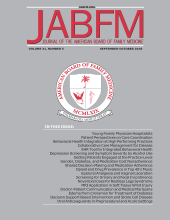Editors’ Note:
This month we continue the feature - STEPped Care: An Evidence-Based Approach to Drug Therapy. These articles are designed to provide concise answers to the drug therapy questions that family physicians encounter in their daily practice. The format of the feature will follow the mnemonic STEP: safety (an analysis of adverse effects that patients and providers care about), tolerability (pooled dropout rates from large clinical trials), effectiveness (how well the drugs work and in what patient population[s]), and price (costs of drug, but also cost effectiveness of therapy).1 Hence, the name STEPped Care.
Since the informatics pioneers at McMaster University introduced evidence-based medicine,2 Slawson and colleagues3,4 have brought it to mainstream family medicine education and practice. This feature is designed to further the mission of searching for the truth in medical practice. Authors will provide information in a structured format that allows the readers to get to the meat of a therapeutic issue in a way that can help physicians (and patients) make informed decisions. The articles will discourage the use of disease-oriented evidence (DOE) to make treatment decisions. Examples of DOEs include blood pressure lowering, decreases in hemoglobin A1c, and so on. We will include studies that are POEMs - patient-oriented evidence that matters (myocardial infarctions, pain, strokes, mortality, etc) - with the goal of offering our patients the most practical, appropriate, and scientifically substantiated therapies. Number needed to treat to observe benefit in a single patient will also be included as a way of defining advantages in terms that are relatively easy to understand.5,6
At times this effort will be frustrating. Even as vast as the biomedical literature is, it does not always support what clinicians do. We will avoid making conclusions that are not supported by POEMs. Nevertheless, POEMs should be incorporated into clinical practice. The rest is up to the reader. Blending POEMs with rational thought, clinical experience, and importantly, patient preferences can be the essence of the art of medicine.
We hope you will find these new articles useful and easy to read. Your comments and suggestions are welcome. You may contact the editors through the editorial office of JABFP. We hope the articles provide you with useful information that can be applied in everyday practice, and we look forward to your feedback.







